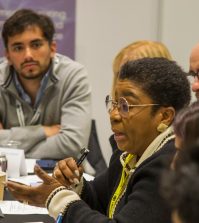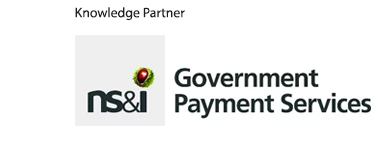Harnessing the power of public procurement through digital transformation

While procurement typically happens behind the scenes, experts on a recent Global Government Forum webinar highlighted its front and central role in helping governments meet their goals, from reducing carbon emissions to delivering better public services.
The panellists agreed that digital transformation is necessary in public procurement to meet policy objectives and protect against leakage, error, fraud and corruption – but there is still significant work to do to achieve this.
Dag Strømsnes, chief procurement officer in Norway’s Agency for Public and Financial Management, illustrated the scale and importance of public procurement, explaining that around 15% of Norway’s gross domestic product (GDP) flows through it.
“The big thing in Norway now…is that we have actually developed public procurement from being a back-office function to being seen as a strategic input factor for the goal achievement of different organisations in Norway,” he said.
“We are not just working to achieve goals within the different contracting authorities. I think the government sees the procurement function as an important tool to also…achieve the ambitious Paris agreement with a huge reduction of the CO2 emissions.”
Matthieu Cahen, senior policy analyst, Public Governance Directorate, OECD, observed that this is part of a broader trend, with procurement being “the single largest expenditure of governments” after salaries.
He said: “But beyond just the economic significance of public procurement, we’re also looking at how this tool can be used strategically, how this tool can support broader policy objectives and to understand that beyond what’s being procured: how it’s being procured is of equal importance.”
Cahen noted that governments are the main buyers in many sectors such as health and education so OECD is looking at “the influence that governments can have on markets, the shift we can make on production [and] consumption”.
The organisation is also working to understand and help address some of the obstacles to governments using procurement more strategically.
“Public procurement is not an end. It’s a means to an end, and that end is the delivery of public services,” he said.
Data insights
The importance of public procurement is also reflected in the World Bank’s approach, which has broadened beyond a focus on minimising risk in the loans it issues.
The bank lends approximately US$91 billion per year but total global public procurement is around US$13 trillion.
“We all became very quickly clear that this was just a small part of the transactions in the world,” said Arturo Herrera, global director for governance in the prosperity vertical at the World Bank.
The World Bank therefore works with governments to increase their procurement capacity in key areas, including the use of electronic platforms or e-procurement systems to manage procurement processes. In 2000, fewer than 10 countries around the world had these systems in place and today the figure stands at around 163.
However, there is still more to do as only about 108 of these have online tendering, said Herrera, and many are not linked to or integrated with budget systems.
Another focus is data and analytics. “Procurement systems provide a lot of information that is not always exploited by the government,” said Herrera.
Laurent Colombant, SAS EMEA continuous monitoring solution lead, expanded on how data and analytics can improve procurement, which he called “one of the most complex processes in government and in companies at large”.
SAS solutions help governments implement controls throughout the whole cycle of buying goods and services, specifically to spot anomalies related to data, processes, wastage, abuse and fraud – around 5% of government procurement expenditures are estimated to be lost to fraud.
For example, he said that while direct evidence of bribery and corruption in procurement – which carry high fines and reputational costs — is often hard to trace, advanced technologies such as neural networks can help by identifying indirect patterns or “smoke signals” that indicate suspicious relationships.
However, he said: “It’s not just fraud, there’s a lot of sloppiness in the whole thing, not necessarily intentional, but it does lead to the losses.”
Onboarding and managing suppliers and bidding are other key points in the process where data analytics and machine learning can flag issues before they become a problem.
Colombant noted, for instance, that following events such as the Rana Plaza disaster in Bangladesh, it’s essential for governments to have oversight of not just their direct suppliers but also suppliers throughout the chain. The Rana Plaza collapse in 2013 killed over 1,100 garment workers due to unsafe factory conditions and exposed deep flaws in global supply chains.
Further in the procurement process, without effective oversight, ‘bid leakage’ can inflate the initial value of contracts by as much as 70% through project scope changes, underestimated costs or added expenses.
“All of that chain is something that we will look at, using analytics to basically surface insights. I call them actionable insights,” said Colombant. “It’s things that you can act upon.”
Building capacity
While technology is bringing benefits in government procurement, the panellists agreed that there are additional facets of digital transformation that need to be addressed.
Strømsnes said: “In a perfect world, I think all contracting authorities should have digital tools that support all the steps in the procurement process, from the assessment of needs through the procurement process and to the contracting follow-up.”
He said that while this does not need to be a single system, it’s important to have a connected data flow that uses standardised information elements throughout the procurement process.
He also highlighted challenges with making procurement more data-driven, many of which are common across governments and to digital transformation more broadly.
“We are struggling quite a lot…with the data quality, because high data quality is a condition for doing good analysis and making good procurement decisions,” he explained.
“We need to build capacity actually to use the data involved and to make the bridge within the procurement process between data analysis and then to make good decisions throughout the procurement work.”
Herrera agreed that new skills are needed, pointing out that many procurement specialists tend to have legal or engineering backgrounds.
“But what you need now is people who have slightly different kind of backgrounds: economists, data scientists, mathematicians, statisticians,” he said.
Picking up on the intersection of technology and human skills, Colombant said that while AI and machine learning can help by analysing, cleaning and enriching data with third-party sources to generate alerts, a significant challenge is finding skilled people to review those alerts.
This will improve, though, as public sector organisations increasingly foster data-driven approaches and skills.
“You need to change the culture and habituate people that this technology is going to help them,” he said.
Cahen also stressed the point about changing the culture, arguing that “public administrations went from paper to digital, but without changing their business processes”.
He said it’s necessary to rethink processes in order to make the most of digital opportunities in procurement. These include AI but also the ability to connect databases and match data across systems.
The panel concluded that digitisation is key to the future of public procurement but technology alone isn’t sufficient. Real change requires better data quality, updated skills, and a shift in culture to fully realise the advantages of data and digital tools.
Replay the webinar – Responsive and resilient: how to create more robust procurement in government – which was held with knowledge partner SAS.

















